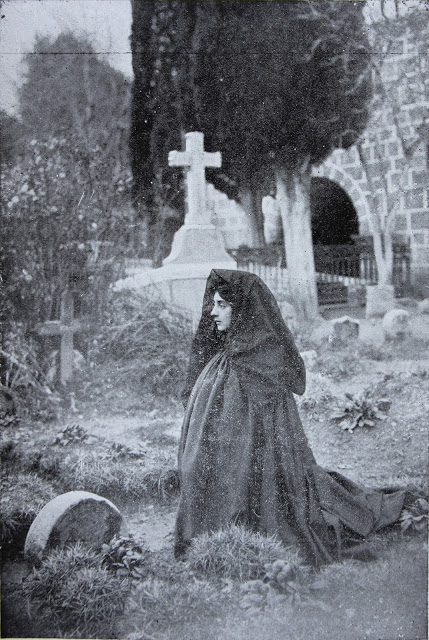It is often said that the Basque people came to Christianity relatively late as compared to their neighbors in the rest of Europe. When they did, however, they did so with fervor and Catholicism is the dominant religion of the region. While only fragments of the pre-Catholic religion remain, they find their way into the practice of Catholicism in sometimes surprising ways. The Basque seroras are one such example.

- Seroras were women who were entrusted with certain activities in the church. They were hired or elected by the local populace or the land owners, often a process involving clashes of power between different groups, and given a house (seroretxea) and some land on the property of the church (or, maybe, in older times, the religious site more generally). She was given some sort of stipend that allowed her to hire some helpers, also always women. She was a lay person, not taking any vows.
- She had two primary duties: care-taking of the church itself and acting as the ‘priestess or mistress of ceremonies’ for the women in the church or parish. In this later role, she often led ritual acts for the dead, including the offering of bread and candles for the souls of the dead.
- The seroras also had another key duty, acting as a keeper of financial accounts for the auzoa, or local community (collection of baserria). In this role, she and her helper harken back to myths of Mari. Myths of Mari often included the idea of ezagaz eta baiagaz, or “with the negation and with the affirmation.” In these stories, if a shepherd, for example, misspoke the number of sheep he had, either too high or too low, Mari and her helpers would take the difference. Roslyn Frank argues that these stories came from real activities of women in society and that the seroras grew out of this role.
- There is also evidence that they were healers. Indeed, one word used for witch, belharguin, means herb-worker. Variants of this name were used for the seroras in some areas. This suggests that, originally, the seroras may have been the village healers and later evolved into the role they took with the churches when Christianity came into the region.
- The seroras, and even the priests, were appointed/chosen by the local auzoa. They often had no formal training in Catholic liturgy. The seroras, in particular, became an issue for the Catholic Church. In his persecution of witches in Lapurdi, Pierre de Lancre was shocked by their presence and role in the churches, writing in 1612 that “Satan, who has always counted on some harpy to deceive the world… has found a way to introduce certain women… to the church.” Eventually, the Church banned these women, through a decree by the Pope that was upheld by King Philip IV in 1623. However, the local Basques often ignored the ban and kept the seroras, in some cases, into modern times.
Primary sources: “A Diachronic Analysis of the Religious Role of the Woman in Euskal Herria: The Serora and her Helpers” by Roslyn M. Frank; The Basque Seroras, by Amanda L. Scott (Scott has a book forthcoming on these women and their role in Basque society); Larrañaga Arregi, Mikel; Serora. Enciclopedia Auñamendi, 2019. Available at: http://aunamendi.eusko-ikaskuntza.eus/es/serora/ar-153053/. Inspired by Invoking the Akelarre by Emma Wilby.
.


Thanks for this, Blas! Learned something new today 🙂
That’s what I like to hear! 🙂 Eskerrik asko!